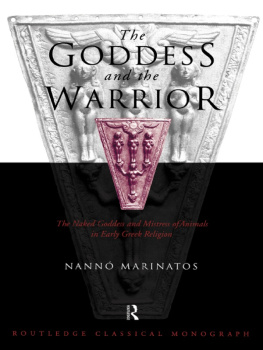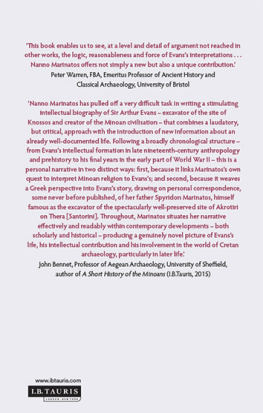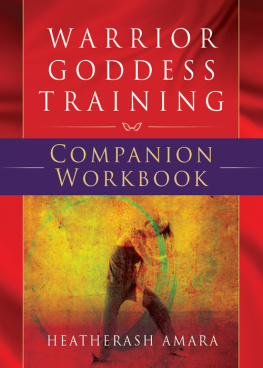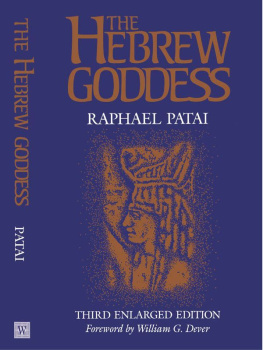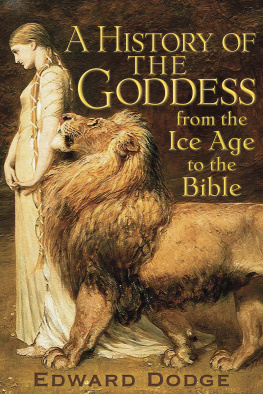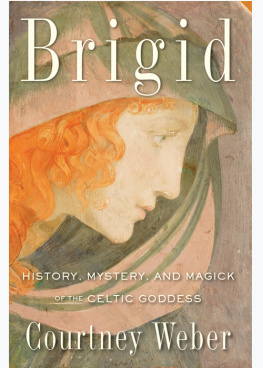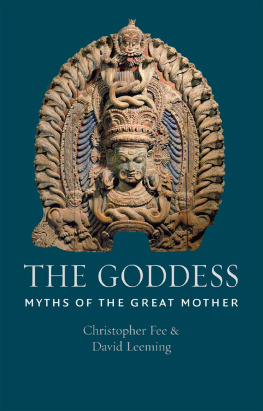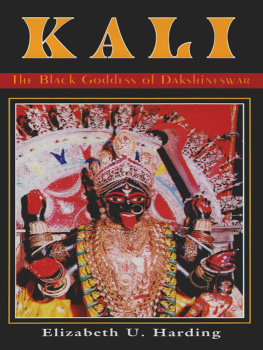THE GODDESS AND THE WARRIOR
The naked goddess and Mistress of Animals in early Greek religion
Nann Marinatos
London and New York
First published 2000
by Routledge
11 New Fetter Lane, London EC4P 4EE
Simultaneously published in the USA and Canada
by Routledge
29 West 35th Street, New York, NY 10001
Routledge is an imprint of the Taylor & Francis Group
This edition published in the Taylor & Francis e-Library, 2005.
To purchase your own copy of this or any of Taylor & Francis or Routledges collection of thousands of eBooks please go to www.eBookstore.tandf.co.uk.
@ 2000 Nann Marinatos
The right of Nann Marinatos to be identified as the Author of this Work has been asserted by her in accordance with the Copyright, Designs and Patents Act 1988
All rights reserved. No part of this book may be reprinted or repro duced or utilised in any form or by any electronic, mechanical, or other means, now known or hereafter invented, including photo copying and recording, or in any information storage or retrieval system, without permission in writing from the publishers.
British Library Cataloguing in Publication Data
A catalogue record for this book is available from the British Library
Library of Congress Cataloging-in-Publication Data
Marinatos, Nann.
The goddess and the warrior: the naked goddess and Mistress of Animals in early Greek religion/Nann Marinatos
176 pp 23.415.6 cm
Includes bibliographical references and index.
1. Goddesses, Greek. 2. Nudityreligious aspects. 3. Animals religious aspects. I. Title.
BL795.G63M37 2000 99 98140
292.2114dc21 CIP
ISBN Master e-book ISBN
ISBN (Adobe eReader Format)
ISBN 0-415-21829-2 (Print Edition)
FOR ANGELIKI LEBESSI
FIGURES
PREFACE
What prompted this study is the seeming paradox that female nudity in the Near East is not only an indication of fertility but also a sign of sexuality and danger. This conclusion was reached thanks to iconography which is the primary vehicle for interpreting religion in this book.
I gained a great deal of inspiration from Othmar Keels work which eloquently stresses the autonomy of images vis--vis the texts. He also organized an entire series, Orbis Biblicus et Orientalis, which deals with Near Eastern religion and images.
I am grateful to Walter Burkert for opening up paths of inquiry which led to the relationship between myth and ritual in the Near East. He has taken the trouble to read the manuscript and suggested various improvements. I must also thank Mario Torelli for inspiring articles and discussions in the summers of 1997 and 1998 on liminality and rites of passage.
Angeliki Lebessi has discussed several issues with me. I thank her for her support and for suggestions on the bibliography while the manuscript was being written.
I thank INSTAP warmly for a grant which helped me prepare the illustrations and Othmar Keel for the right to reproduce drawings of seals and other Near Eastern images from his series Orbis Biblicus et Orientalis. The drawings were executed by V.Pliatsika, F.Evenson and O.Apergi. My gratitude also goes to Yiannis Papadakis at Herakleion Museum for taking photographs for the book, and Nelly Lazaridou and the German Archaeological Institute Athens (DAI) for the use of several photographs from their archives.
The errors remain mine.
Nann Marinatos
ABBREVIATIONS
1
THE NAKED GODDESS AND MISTRESS OF ANIMALS IN THE NEAR EAST AND GREECE
The naked goddess and the goddess who lifts her skirt
That the naked figures in Greece of the Orientalizing period are of Near Eastern derivation has been universally acknowledged. Our female figures are nude in this sense because their nudity is charged with sexuality.
Examining the narrative context of the nude figures on Near Eastern seals may be rewarding. On cylinders or their imprints, the naked females do not stand alone but are associated with other figures, animals and symbols. We thus get a visual context which is missing when we study solitary clay or bronze figurines of similar appearance.
We shall consider the females on cylinder seals whose main characteristic is nudity. Some of the naked figures are inactive, others draw their dress to the side in order to reveal their pubic triangle. They appear most frequently in Syrian glyptic, although there are examples also from the Babylonian, Capadocian and Anatolian regions. Despite these limitations, the examples which will be discussed fall into a pattern in which sexuality is coupled with power.
One frequent assumption must be challenged. If the naked figures are goddesses, they are for the most part not major figures of the pantheon, Ishtar or Anat. On seals we often meet with a minor naked goddess, whose name we do not even know, but who seems to be linked with sorcery and magic, and who has the role of an intermediary. She makes contact between the worshipper and his gods possible.
We shall start with an Old Babylonian seal dating to the second millennium BC ( One might argue that the warrior symbols symbolize the male god, the suckling goat the naked goddess. As we shall see further on, however, the goddess can also be associated with motifs of danger. Another point worth considering is that men, rather than women, are associated with the nude goddess.
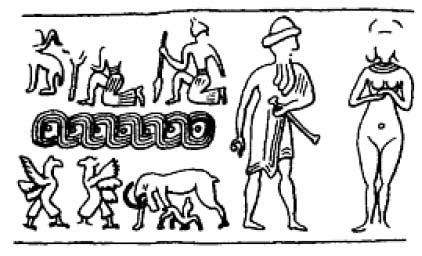
Second millennium BC Old Babylonian cylinder seal
Source: Winter (1983) figure 102
Another example, dating to the early second millennium BC ( Again the emphasis is on sexuality, rather than fertility.
On an Old Babylonian provincial cylinder of the same date as the previous example ( Sexual union between the god and naked goddess is implied on this seal also; there is no evidence of fertility.
On one more second millennium BC Babylonian cylinder ( However it should be stressed that her small4size reveals a low rank in the divine hierarchy.

Second millennium BC provincial Babylonian cylinder seal
Source: Winter (1983) figure 81
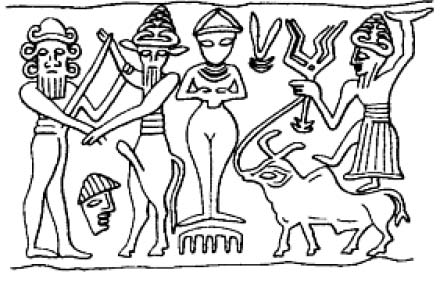
Second millennium BC Old Babylonian cylinder seal
Source: Winter (1983) figure 85
On two more Old Syrian cylinders of the second millennium BC ( At any rate she is powerful, dominating and unambiguously associated with men.

Second millennium BC Old Babylonian cylinder seal
Source: Winter (1983) figure 95

Second millennium BC Old Syrian cylinder seal

